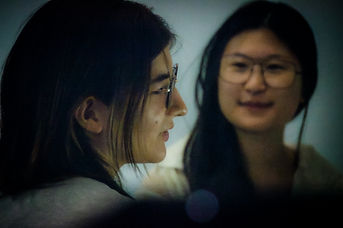About The Day We Flew
An optimistic toy bird embarks on a journey to find its missing owner after 20 years.
Our Story
This is a story about a long-abandoned ceramic bird,
and a girl who, after losing her way, chooses to carry on.
Death often feels like a vast, distant idea. But in truth, we spend our entire lives resisting it. It can take the form of a stray cat that didn’t survive the winter, a grandmother slowly forgetting the names of her children, or a teenager who, unable to find a way out, quietly disappears.
As a child, I dreamed of creating animated films that would bring people joy—films that could make the world just a little bit better. But as I grew up, I came to see that the world is far harsher than I imagined. Making people smile isn’t a simple goal. I often feel powerless in the face of everything I cannot change. Perhaps the only reason I’ve made it this far—standing here today as a student director—is because I was privileged enough to escape the worst of it.
I don’t know what to say to the children who are still in pain. I have no answers to give, nor should I. Because the answer to “Why should I keep living?” can only come from within oneself.
All I can do is make this film with everything I have.
For Ann, the protagonist of this story, her answer lies in a little toy bird from her childhood. An old ceramic wind-up toy, proof that she once existed. It carries memories of days gone by, her dream of becoming an ornithologist, and her connection to the world. It also holds the kindness she once gave to the world, and the kindness she received in return.
That distant memory does not simply resurface—it fights its way back.
The little bird awakens in her final moment— drags itself through layers of forgetting, through storms of silence and the wreckage of time. Chipped, weathered, and nearly broken, it crosses every barrier to reach An once more— not as a toy, but as a spirit bird, shaped by everything she had given and everything she had lost, guiding Ann back home.
Struggle is often silent—unseen by anyone but ourselves. Ann chooses death, but she is not weak, not helpless, and not in need of saving.
The traces she left in this world—of pain, of brokenness, but also of warmth and moments of light—are what saved her. Warmth may never be the main theme of life, but it does exist. She accepts them all. The good and the bad, the soft and the strong—they are all part of who she is.
She returns alone. And after her, perhaps more will follow— in the sunlight, in the rain, holding one another’s hands tightly, continuing forward.
This is not a film designed to “heal” everyone. I chose to keep certain elements that may feel painful or even triggering, because pain is not abstract—it is something many people are going through right now. But if, by some small chance, this film reaches a boy or girl standing at the window, on the rooftop, or holding a bottle of pills— and it gives them even the smallest, quietest change of thought— could that be a kind of strength?
If so, then that would be more than enough. To me, that is the voice I want this film to carry.
It may be small, not sharp enough, not soft enough, but it means someone is still standing with them, still resisting.
The world is not always beautiful. But no matter what, we are still here— and so is a little bird that will always love you.
So to every child out there:
In this world where there is sunlight, and summer, and people who love you— please protect yourself.
Let’s walk forward, together.
- Ryan Wang, Director





.jpg)



